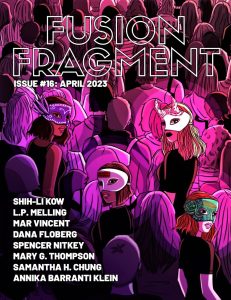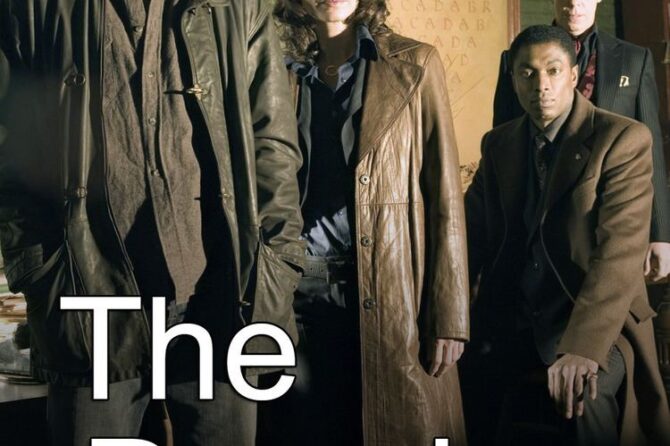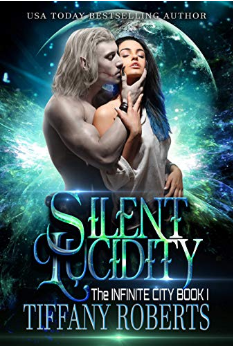
OBIR: Occasional Biased and Ignorant Reviews reflecting this reader’s opinion.

FUSION FRAGMENT MAGAZINE #16 – April 2023.
Publisher: Fusion Fragment, Ottawa, Ontario, Canada.
Editor: Cavan Terrill
Cover Art: Cassie Daley
FICTION:
In the Company of Nighthawks – by Mar Vincent
Premise:
A lifetime of being the only crew member aboard a starship where everybody else is in a state of suspended animation. How do you train for that?
Review:
Needless to say, gregarious extraverts who can’t even survive without the presence of others need not apply. Loners wanted. Not amateurs, but always-a-loner types; people who are alone even in the midst of a crowd. People who are perfectly content to be alone. Who feel happiest when alone.
Trouble is, no one is a complete introvert. I am not at all bothered when I am alone. I find being alone very relaxing. Allows me to get a lot of work done on assorted projects and hobbies. Nevertheless, I am in daily contact with many people via email. And every now and then I enjoy the company of others. Could I handle the shipboard life, out of contact with distant Earth (messages taking years to exchange), and no one to talk to except the ship’s computer?
I suspect not. In fact, it’s probable I’d spend increasing amounts of time talking with imaginary friends, even arguing with them. Not to mention treating the plants in the hydroponic gardens to lengthy discourses. I might not be sane by the time the ship reaches its destination. I might refuse to defrost the crew because I’m mad at the spinach in the garden for refusing to acknowledge my presence. Who knew?
Well, so much for my qualifications. Vincent explores the thoughts of a loaner already on her way to a distant star, someone calm and rational contemplating their past training and finding it good, someone ideally suited for the task. It’s fascinating to observe the rationale required, probably something NASA should pay attention to. Any yet, and yet, there was this one flaw in the assumptions of the trainers, a bit of a rebel streak the astronaut gave into but cleverly manipulated to serve the overall training. Would have worked fine, except for unintended consequences. This is what she is still chewing on late into her voyage. Makes for a very subtle yet poignant story.
To Hold a Heart in your Hand like a Helium Balloon – by Samantha H. Chung
Premise:
The Regentech Corporation has figured out how to bring the dead back to life… almost.
Review:
Pax, a researcher at Regentech, is the individual brought back to life. The PR news conference doesn’t go well. He’s pretty much a classic zombie, one who is soon on the loose. His sister Anne is very much upset. But Esme, Pax’s other sister, who is also an employee of Regentech, has a more nuanced view of the matter. It’s complicated.
Chung raises all sorts of moral and ethical questions in this story, but even more intriguingly, legal questions. As far as I know, the only country on Earth to have a law dealing with zombies is Haiti, and the law is very straightforward and practical.
To be precise, article 246 in the Haitian criminal code, amended in 1864, reads in part: “…any attempt on the life of a person through the use … of substances which, without giving death, will cause a more-or-less prolonged state of lethargy…. If the person was buried as a consequence of this state of lethargy, the attempt will be considered a murder.”
Not quite the modern concept. In Haiti the idea was that the practice of drugging people into a state of paralysis, such that they were buried, and then were clandestinely revived to serve as mentally-damaged slaves, was common enough to require legislation. Not actually a matter of reviving dead people. So, the legal status of a classic zombie in Haiti, as elsewhere, remains undefined.
The result is, in the real world, that the legality of any proposed action toward actual zombies, be it destroying them or holding them captive, would be subject to numerous lawsuits. Probably, in the USA at least, it would go all the way to the Supreme Court.
All of us know how murky the current state of American law is. It’s a gigantic political football. An outbreak of zombies would only complicate matters. The only certainty is that the legal profession would become even more profitable.
The fascination of this story lies in the familial complications, yes, but also in the fact everyone has to operate under threat of legal consequences. Quite the comment on modern life. Puts me in mind of Edward Gibbon’s comment that an extreme rise in litigation is a sure sign of a civilization’s imminent collapse. Hmm, ultimately to the advantage of zombies I should think.
Anyway, grisly horror story, yet fun entertainment in terms of the concepts Chung plays with. I find it most intriguing.
The Song, Its Singers, and the End of the World – by Spencer Nitkey
Premise:
Incredible that aliens would take care not to hurt us as they destroy the Earth.
Review:
Surreal ambiguity best describes this story. Aliens? Or just one? Do they care about us? Apparently, in the short term, but soon we all die. Does the alien phenomenon sing? Or is it just noise, an auditory artifact of Earth’s destruction? What can people do in the time remaining? Not a lot of options. Does it matter?
Entire populations have faced the inevitability of mass death before. Sometimes no quarter is taken when a village, a town, or a city falls. Too often the media portrays war as a sports game, with both sides assuming they’ll win. In reality often the best one side can hope for is to take revenge in advance of their own destruction. But why belabour the point? At its most basic level this story is a metaphor for the inevitable death each and every one of us is destined to experience. What makes this story unusual is that everyone on Earth will perish at the same time (unless they chose to go early) and everyone gets to contemplate said fate knowing that everyone else is doing the same thing. As a result, statements and decisions don’t require much explanation. Everybody knows what you’re referring to.
The main character, like everyone else, has mixed emotions about her prospects. Call it a study of a mind in turmoil. It begs the question, what would you do?
In my case, disappointingly mundane. I’d probably go on watching old movies and making model airplanes, then, at the last moment, step outside to watch. Nitkey’s character takes a much more creative approach, one meaningful to her and to her alone. In a personal sense, the best of all possible choices. We should be so lucky.
I think the intent of the story is to suggest we face our ultimate fate squarely on if we have the time and circumstances to do so. Good advice, where feasible. Definitely something worth thinking about.
To sum up, a philosophical story with a message for all of us, but also a story with a unique threat I’ve not seen before. Overall, refreshingly original.
The Maskmaker – by Dana Florberg
Premise:
The SAFE act was passed into law to reduce violence against women. All women fourteen and older must wear white, featureless masks covering the upper 60% of their face whenever they are out in public or in the presence of a non-family member. No exceptions.
Review:
At first this seems outrageously politically incorrect, akin to advising women not to dress “provocatively” in order to avoid rape. Yet many a male politician utters such advice. It’s not impossible to imagine they might support a law which puts women in their place “for their own protection.” The story explores what the consequences are likely to be.
The rights of women are an ongoing debate, to put it mildly. No matter which way the pendulum of public opinion swings, the universal constant is that the role of women is always politicized. In this story the mindless minutiae of political interference is described in terrifying detail. For instance, lobbyiest money guarantees a single company is given a monopoly on mask making. To maximise profit through simplicity of manufacture, by law the masks must always be white, even if the wearer is not white. Ethnic diversity is not recognized, by implication no doubt because of racism, but also because the manufacturer considers it not cost effective.
Personal freedom is at stake. Technically illegal to take off the mask at a first date. Or even in the presence of friends. If you are trans or non-binary or anything at all different from “birth-assigned” gender, wearing a mask can get you beaten up or arrested, and not wearing a mask can get you killed. The SAFE act, in the name of egalitarian equality and gender-wide safety, is merely a political tool enabling a puritanical mindset to harass and even destroy all those who refuse to conform. Sound familiar?
William Gibson has always maintained that the best science fiction is about today. To my mind this story fits that definition. It really is a superb example of the best kind of science fiction Gibson is talking about.
It is a dystopic vision of social engineering, all about a nation dedicated to freedom (the USA, as references to Congressmen make clear) allowing politicians to narrowly define what freedom is so that they can put an end to freedom for all the “scum” whose lifestyle and politics they loath and despise.
Florberg ensures her story is accessible to the reader. Her main character, Evelyn, is a reporter assigned to the “fluff-work” of interviewing a mask maker who has startled the fashion world (and lawmakers) by offering custom white masks adorned with colourful add-ons. Teenagers start adding their own decorations, scandalizing parents and school boards. The police get involved. Politicians realise the SAFE act isn’t specific enough and argue over proposed amendments. All the while Evelyn begins to comprehend that her continuing coverage of the story may be the most significant and impactful journalism she will ever write. In a sense, she is publicly removing society’s mask which hid all manner of oppression and abuse beneath a bland exterior. This kind of reporter (so rare) is a politician’s nightmare.
Yet this is not a simplistic rant of a story. The situation is extremely complex. Many women support the SAFE Act, for they fear being “exposed” in more ways than one. Others rebel, often unconsciously, but sometimes boldly. Most rely on their “masks,” both physical and metaphysical, to hide their true feelings about wearing masks. There is no unity among women about what the role of women should be, which reflects the real world depressingly accurately. Indeed, this story is absolutely about what’s going on now.
This story is one of the most important stories I’ve ever read. I put it right up there with 1984 or Brave New World or The Handmaid’s Tale. It’s that gripping an extrapolation of modern trends toward an unenviable future. Powerful stuff. I’m deeply impressed.
Silica Dust, Silica Sky – by Shih-Li Kow
Premise:
Never mind after civilization collapses, can you still earn a living and plan for the future while civilization collapses?
Review:
It’s ninety years in the future. Kuala Lumpur, like the rest of the world, has become a lousy place to live. It’s unbearably hot, 40 degrees C. considered a cool day, the dust-laden air is near-toxic and near-unbreathable, and water-management districts and regular electricity are quaint artifacts of the past no modern city can afford. Life sucks.
There’s a tendency to envision people in such circumstances moaning about and waiting to die. In fact, as this story makes clear, in dire circumstances most people willfully struggle to survive, and if possible, flourish. Suria is a thirty-nine-year-old architect-engineer, still dreaming of bearing children once she and her lover Ibrahim can afford to move to Rainhill, the last refuge of technocrats and bureaucrats, a climate-controlled domed city where life is pleasant and comfortable. She owns a profitable deconstruction company and, being highly trained and experienced in her profession, is able to win bid after bid on contracts to demolish derelict buildings and sell the rubble. Not the finishings—those were stripped out decades ago—but the metal and silica debris of shattered stressed-concrete, so useful for manufacturing the material employed for the new underground buildings which alone protect from the climate.
Trouble is the demolition stirs up yet more dust to add to the particulate-laden atmosphere. Breathing is a problem, not just in Kuala Lumpur but everywhere on earth. Can Suria save enough money to purchase the right to live in Rainhill? Before she and Ibrahim—who is already pretty far gone—die of lung disease? One more big contract should do it, but competition is fierce.
As a former accountant for several construction companies, I can tell you that bidding low enough for juicy contracts but not so low that potential cost overruns wipe out all profit is a nightmare conundrum, call it a gamble, that is the very lifeblood, or deathblood, of the industry. Couldn’t help but notice that engineers tasked with coming up with appropriate estimated expenses for a bid were often heavy drinkers, some of them raging alcoholics. Methinks a lot of stress involved. So, my work experience, i.e. observations of co-workers’ work experience, allows me to empathise with Suria. But, so can anyone struggling towards a difficult-to-achieve goal. Suria is everybody who works hard without guarantees.
This story is classic hard science fiction. The level of technology is more advanced than today, but barely enough to ensure survival for a privileged few. This raises the prospect of technology becoming wonderful, as many today seem to assume will happen, but too late to maintain infrastructure and economy, too late to prevent collapse. Technology not necessarily a cure-all.
Life is portrayed as hard and desperate, yet still fully human for all that implies. Some delightful touches are thrown in, such as the future of tourism in benighted times. But at its core, this story is realistic science fiction, an extrapolation of what may turn out to be inevitable, a warning of what we may become, and a reminder the human race tends not to give up but instead prefers to carry on as if there is a future worth having.
To sum up, you can believe in this future. You don’t want to, but Kow ensures you can’t dismiss it out of hand. It could very well come to pass. Something to avoid, if we can.
The personal choices made by the characters are also very real. The whole story has a documentary-like “feel,” as if it were a fictional glimpse and commentary on life today. Prescient, in other words. Powerfully so.
1. Sylvestris 1.0 – by L.P. Melling
Premise:
Are we insects, or human? Perhaps we need to be both to stave off the machines.
Review:
Being literal-minded, it took me a while to grasp what this story is about. Basically, a colony on a far distant world, in a system baked by multiple suns, was set up as a refuge for those fleeing an interstellar war. Though covered in rain forest, it is far from a garden of Eden. A legion of mindless machines is harvesting the forest, either to utilize it as a resource, or to deny habitat for the humans. No one knows which. The machines don’t know. And there’s no indication of who, or what, sent them.
Hard to identify with the current inhabitants. They seem to be no longer human, in that their biological patterns match those of insects. Most are drones, for example. All are the offspring of a single queen. They share the planet with wasps and spiders and interact with them in extraordinary ways because of religious ideology. Some events are dreams or visions inspired by religious faith, or obsession. It is not a technological world, but one steeped in mysticism and blind, obedient faith. The mentality seems more medieval than modern.
I view it as a metaphor for the challenges imposed by increasingly pervasive and ubiquitous technology. Should we rise above it by evolving a rigid lifestyle totally dependent on ourselves, albeit at the price of losing our individualism? Is this the solution to the risk of being absorbed and perhaps destroyed as a species by the rise of AI? Or is this the biggest risk of all, becoming machine-like in thought and deed (after all, what are insects but natural Nano-bots?) in order to defeat AI and render it extinct? Or is the solution one and the same as the threat, and it doesn’t matter what we do, as the “insect-minded people” are already machines, albeit meat-puppet versions.
This is a very modern conundrum. Philip K. Dick gave a speech at Vancouver’s VCON 2 in 1972 in which he argued we need to study the behaviour of machines and robots-to-come if we are ever to fully understand the nature of human beings. At the time, I thought his suggestion was idiotic. Now, I’m convinced he was right. Melling’s story helps illustrate why I think this way. A thought-provoking story, far more than a mere adventure-on-another-planet story. It raises the spectre of a plausible but depressing future. Consider it a warning.
Duplicate Variation Space Psychosis – by Mary G. Thompson
Premise:
Replicants serving aboard a starship are very useful. But how reliable are they when they go spiritual?
Review:
Andrea is the sole individual onboard who knows how to grow meat in the vats. Ship’s meals, and the crew, will suffer if she is executed or placed back in stasis to be offloaded at the next spaceport.
Thing is she hasn’t done anything wrong. It was the other Andrea who spaced herself and a crew member along with her. The board of inquiry wants to know if Andrea-on-trial is from a particularly bad batch of Andreas and shares the same inbuilt weakness. How many crew will die if she decides to become one with the universe?
Andrea is confident she is sane. But she is beginning to find shipboard crew space confining, and there’s that new habit of staring out a porthole at the stars for hours on end… she wants to be found innocent of intention and worthy of continued service but is herself prey to doubts.
Andrea was implanted with all the training and motivation she will ever need to function well as a member of the crew. In that sense she is no different from any natural human who has undergone years of training toward the same end. Therefore, I see her representing the conundrum of how long can a highly motivated, well-trained individual can function aboard a starship? Or Antarctic base? Or nuclear submarine? Or any finite, enclosed situation with the same-old fellow crew members day after day?
Fact is repetition and boredom can wreak havoc on motivation over a prolonged period of time. Numerous other factors as well, often quite subtle ones that psychologists on training staffs miss. Every person is far more complex than any given analysis will reveal. There are no easy answers. Is this person reliable? At best, maybe.
Will replicants be simpler, easier to understand? Or just as complex or crazy as the rest of us? This story is an intriguing exploration of that problem.
Six Meals at Fanelli’s – by Annika Barranti Klein
Premise:
Nora’s father is dead. But he keeps inviting her to his favourite restaurant.
Review:
A bit difficult for me to review, as my beloved big brother passed away recently, quite gently, at the age of 79. Still learning to live with his loss, something I’ll probably continue for the rest of my life. So, understandably perhaps, a bit reluctant to read a story dealing with personal loss.
Fortunately for me, Klein’s fiction isn’t a horror story, but rather a gentle survey of a useful coping mechanism, to do with memory, albeit expressed in supernatural terms. But, really, it’s about psychology and the need to be rational in terms of emotion when contemplating loss. I don’t mean rational in terms of restraint or denial, but in terms of calm, understanding, and even appreciation.
To be sure, in the context of the story, Nora is perturbed and worried, wondering whether grief is threatening her sanity. The drama comes from her painful struggle to comprehend what is happening to her.
However, in terms of the underlying context, the true meaning of the story, it is a useful and healing example of an intelligent and perceptive recipe for coping with unbearable loss. It benefits me, anyone currently in a similar state of grief, and frankly, all readers likely to face same in the future. Consequently, I welcome this story. It means a lot to me. And to many others, I’m sure.
CONCLUSION:
At the end of every story, I gather the authors reveal the genesis of their purpose and explain what it’s all about. I skipped past those bits. The above is purely, and typically, based on my idiosyncratic self.
That said, I find the underlying concepts of all the stories remarkably sophisticated and meaningful. Not just entertaining, but intellectually stimulating. Worth reading, all of it.
Check it out at: < Fusion Fragment #16 >











Recent Comments